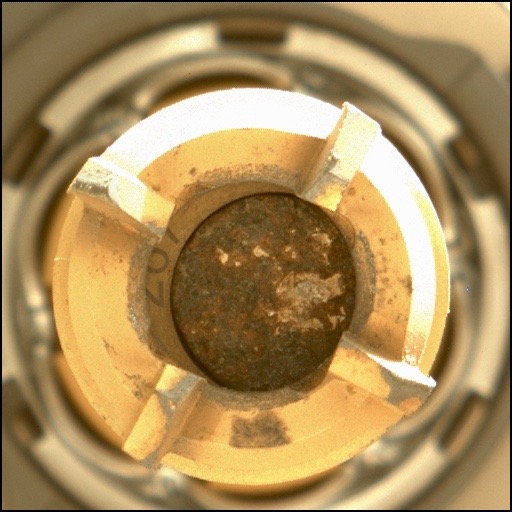Perseverance rover collects 2nd Mars sample (photos)

NASA's Perseverance rover has now socked away two Red Planet samples.
Perseverance collected a drilled-out core of a Martian rock dubbed "Rochette" and sealed the sample in its designated titanium tube, mission team members announced via Twitter on Wednesday (Sept. 8).
The success came just four days after the car-sized rover collected its first-ever Martian sample, which was also cored from Rochette.
Related: Where to find the latest Mars photos from NASA's Perseverance rover

Perseverance landed inside the Red Planet's 28-mile-wide (45 kilometers) Jezero Crater on Feb. 18. The six-wheeled robot's chief tasks are hunting for signs of ancient Mars life and collecting and caching dozens of samples, which will be brought to Earth by a joint NASA-European Space Agency campaign a decade or so from now.
Early in its mission, the rover also supported and documented the first few flights of NASA's technology-demonstrating Ingenuity helicopter, which traveled to Mars on Perseverance's belly. Ingenuity is now embarked on an extended mission, scouting out areas of potential interest to the rover.
Once Perseverance's samples arrive here, scientists in labs around the world will study them for evidence of life and clues about Mars' climate and geological history, NASA officials have said.
Breaking space news, the latest updates on rocket launches, skywatching events and more!
Perseverance first tried to collect a sample on Aug. 5 but was stymied by an unexpectedly soft target rock, which crumbled to bits beneath the rover's percussive drill. Rochette is made of much sturdier stuff, as the two latest drilling efforts have shown.
NASA will hold a news conference at 12 p.m. EDT (1600 GMT) on Friday (Sept. 10) to discuss the recent sampling efforts and what the Perseverance team has learned about Rochette to date, among other topics. You can watch it live here at Space.com, courtesy of NASA, or directly via the space agency.
The briefing participants will be:
- Lori Glaze, director of NASA's Planetary Science Division at NASA headquarters in Washington
- Jessica Samuels, Perseverance surface mission manager at NASA's Jet Propulsion Laboratory (JPL) in Southern California
- Matt Robinson, Perseverance strategic sampling operations team chief, JPL
- Katie Stack Morgan, Perseverance deputy project scientist, JPL
- Yulia Goreva, Perseverance return sample investigation scientist, JPL
- Meenakshi Wadhwa, Mars sample return principal scientist, JPL and Arizona State University
Mike Wall is the author of "Out There" (Grand Central Publishing, 2018; illustrated by Karl Tate), a book about the search for alien life. Follow him on Twitter @michaeldwall. Follow us on Twitter @Spacedotcom or Facebook.

Michael Wall is a Senior Space Writer with Space.com and joined the team in 2010. He primarily covers exoplanets, spaceflight and military space, but has been known to dabble in the space art beat. His book about the search for alien life, "Out There," was published on Nov. 13, 2018. Before becoming a science writer, Michael worked as a herpetologist and wildlife biologist. He has a Ph.D. in evolutionary biology from the University of Sydney, Australia, a bachelor's degree from the University of Arizona, and a graduate certificate in science writing from the University of California, Santa Cruz. To find out what his latest project is, you can follow Michael on Twitter.
